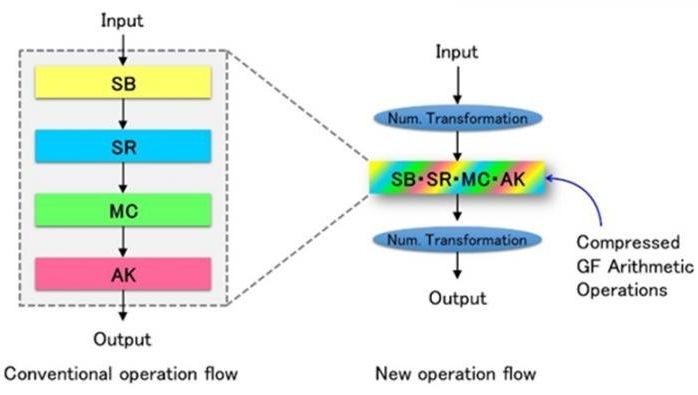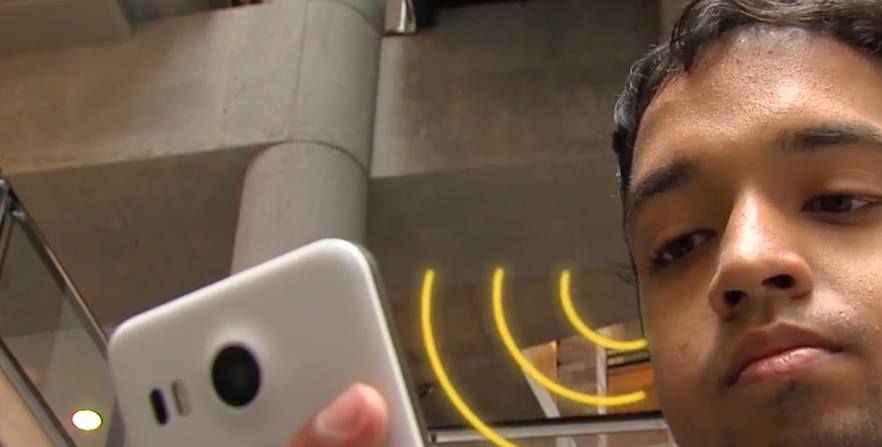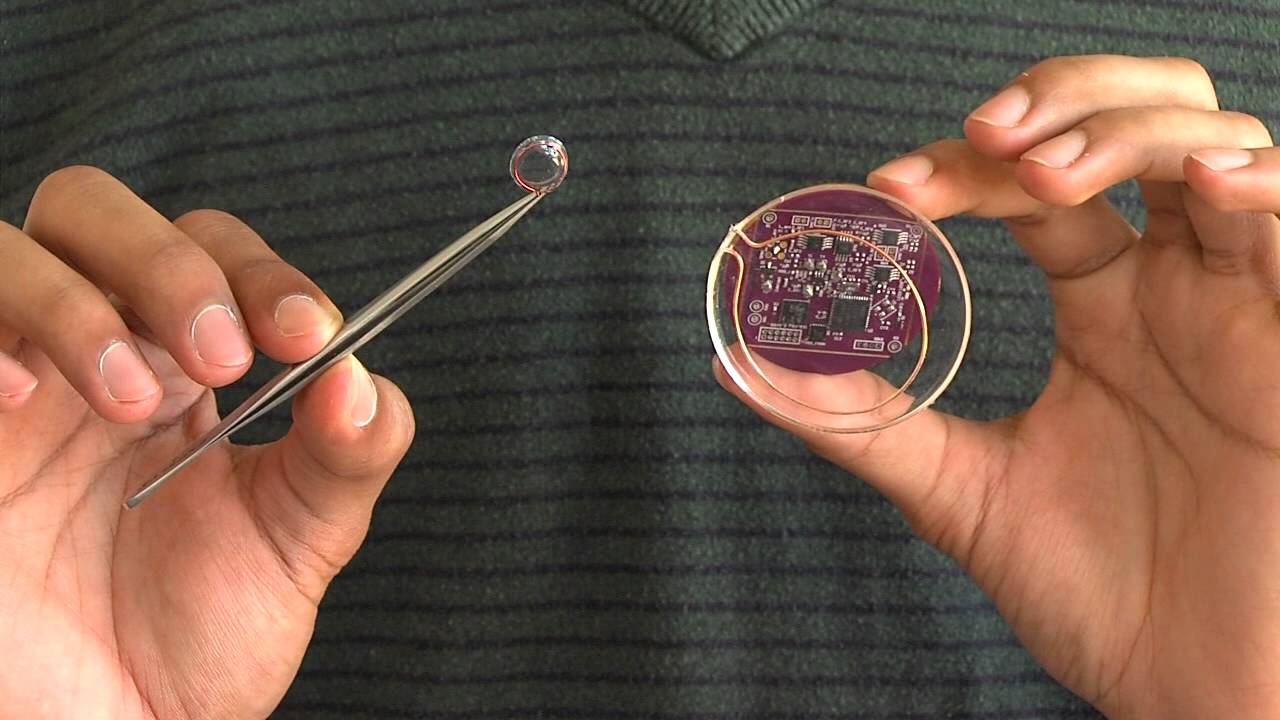Tech lets wireless access points cancel out interference, providing a speed boost for crowded venues. It might help cellphone towers, too.



Nice.
Engineers at the University of Washington (UW) have devised a new method of wireless communication that converts Bluetooth transmission from mobile devices into Wi-Fi signals. Using this “interscatter” communications technology allows medical devices and implants with limited power sources to gain the ability to send data using low-power Wi-Fi signals to smartphones and smartwatches.
The UW team previously described the technique of “backscattering” ambient RF signals — repurposing existing RF signals in the environment — to enable device-to-device communication without the need for onboard power sources. Now, the team builds on that prior research to introduce “interscattering,” the inter-technology, over-the-air conversion of Bluetooth signals to create Wi-Fi transmissions.
The researchers wrote in a paper that novel medical devices, such as smart contact lenses and neural implants, currently have power constraints that limit their ability to generate Wi-Fi, Bluetooth, or ZigBee transmissions to communicate with smartphones, watches, and tablets. To overcome this, the researchers suggest an interscaterring communication system.

Hope they’re working with QC researchers in Los Alamos and DARPA; it is the US Government which is known for its silos and multi-layer bureaucracies.
Quantum computing is a novel way to build computers — one that takes advantage of the quantum properties of particles to perform operations on data in a very different way than traditional computers. In some cases, the algorithm speedups are extraordinary.
Specifically, a quantum computer using something called Shor’s algorithm can efficiently factor numbers, breaking RSA. A variant can break Diffie-Hellman and other discrete log-based cryptosystems, including those that use elliptic curves. This could potentially render all modern public-key algorithms insecure. Before you panic, note that the largest number to date that has been factored by a quantum computer is 143. So while a practical quantum computer is still science fiction, it’s not stupid science fiction.
(Note that this is completely different from quantum cryptography, which is a way of passing bits between two parties that relies on physical quantum properties for security. The only thing quantum computation and quantum cryptography have to do with each other is their first words. It is also completely different from the NSA’s QUANTUM program, which is its code name for a packet-injection system that works directly in the Internet backbone.)
NORWELL, Mass.—(BUSINESS WIRE)— Last week, Nature Publishing Group sent the scientific areas of the Internet into a frenzy by publishing a groundbreaking study that proves the positive effects of long-term training with Brain Machine Interfaces (BMI) on patients who have suffered a spinal cord injury (SCI).
The study titled “Long-Term Training with a Brain-Machine Interface-Based Gait Protocol Induces Partial Neurological Recovery in Paraplegic Patients” was conducted by an international group of scientists, led by the Duke University neurobiologist Miguel Nicolelis and demonstrates that it’s never too late to start intensive therapy.

First, there is sharing. Self-driving vehicles promise to have a dramatic impact on urban life, because they will blur the distinction between private and public modes of transportation. “Your” car could give you a lift to work in the morning and then, rather than sitting idle in a parking lot, give a lift to someone else in your family – or, for that matter, to anyone else in your neighborhood, social-media community, or city. Some recent papers by MIT show that today’s mobility demand of a city like Singapore could be satisfied by just one-fifth of the number of cars currently in use. Such reductions in car numbers would dramatically lower the cost of our mobility infrastructure and the embodied energy associated with building and maintaining it. Fewer cars may also mean shorter travel times, less congestion, and a smaller environmental impact.
–A second change is parking. Parking infrastructure is so pervasive that in the United States it covers around 5,000 square miles, an area larger than Puerto Rico. Increased sharing of vehicles, as outlined above, would dramatically lower the need for parking spaces. Over time, vast areas of valuable urban land currently occupied by parking spaces could be reinvented for a whole new spectrum of social functions. Creative uses are already promoted across the world during Parking Day, a worldwide event held on the third Friday of September, where artists, designers and citizens transform metered parking spots into temporary public places. The same dynamic re-purposing could happen tomorrow on a much larger scale and with permanent solutions, leading to the reclamation of a large percentage of the urban fabric.
–Finally, urban infrastructure is subject to change. Traffic lights are a 150-years-old technology originally conceived for horse carriages. With the advent of widespread autonomy, slot-based intersections could replace traditional traffic lights, significantly reducing queues and delays. This idea is based on a scenario where sensor-laden vehicles pass through intersections by communicating and remaining at a safe distance from each other, rather than grinding to a halt at traffic lights. Vehicle speed could be controlled so that each vehicle reaches the intersection in synch with the assigned slot – so that stop and go is avoided. The latter, in turn, would reduce emission of pollutants and greenhouse gases caused by the acceleration and deceleration cycles.


Energy efficient IoT — proven to reduce energy usage by 50% via new technique for compressing the computations of encryption and decryption operations known as Galois field arithmetic operations.
Our research group has discovered a new technique for compressing the computations of encryption and decryption operations known as Galois field arithmetic operations, and has succeeded in developing the world’s most efficient Advanced Encryption Standard (AES) cryptographic processing circuit, whose energy consumption is reduced by more than 50% of the current level. With this achievement, it has become possible to include encryption technology in information and communication technology (ICT) devices that have tight energy constraints, greatly enhancing the safety of the next-generation Internet of Things (IoT). This result was announced on August 19, 2016 during the Conference on Cryptographic Hardware and Embedded Systems 2016 (CHES 2016) hosted by the International Association for Cryptologic Research (IACR) in Santa Barbara, USA.
It is currently very common to exchange important personal or financial information over the Internet through ICT devices. Cryptographic techniques are used inside these devices to protect important information. In next-generation networks such as the IoT, which has attracted attention in recent years, it is expected that myriad devices will be connected to the network. Hence, it will be necessary to have built-in encryption technology in these connected devices to prevent malicious attacks. However, many battery or cell-driven devices with tight energy constraints are also included in the IoT and running energy-consuming encryption processes on these is a big challenge. One of the most widely used international standard encryption methods is AES. Since this is used in areas such as wireless LANs, it is very important for practical reasons to design energy-saving AES cryptographic processing.
Tohoku University and the NEC Corporation have been collaborating on research and development since 2013 with the purpose of improving the safety of ICT devices. In particular, they aim to build a system that will allow the new IoT services to be enjoyed with confidence. This will be done by developing technology that embeds encryption in small devices and sensors for the first time. This research and development is being carried out as part of the Grants-in-Aid for Scientific Research (KAKENHI) program No. 25240006 “Development of formal design technology for VLSI data path based on the Galois field computations.” (Research representative: Naofumi HOMMA, Tohoku University).


Luv this.
Smart devices implanted in the body have thus far not been able to communicate via Wi-Fi due to the power requirements of such communications. Surgery is required when the battery in a brain stimulator or a pacemaker needs to be replaced. Not only is this expensive, but any surgery has inherent risks and could lead to complications. It is therefore critically important that the battery life in implanted medical devices be preserved for as long as possible.
Other constraints limiting how much power a device can use include their location in the body and their size. New emerging devices that could one day reanimate limbs, stimulate organs, or brain implants that treat Parkinson’s disease are limited by the same factors.
Smartwatches, smartphones and other similar Bluetooth enable devices continuously transmit communication signals. A team from the University of Washington (UW) consisting of computer scientists and electrical engineers, have developed a method that utilizes these signals and converts it to Wi-Fi signals. The new method uses ten thousand times less energy than traditional methods do. Another huge advantage of this method is that it does not need any specialized equipment.
[youtube_sc url=“https://www.youtube.com/watch?v=uRX3_48bKF0”]